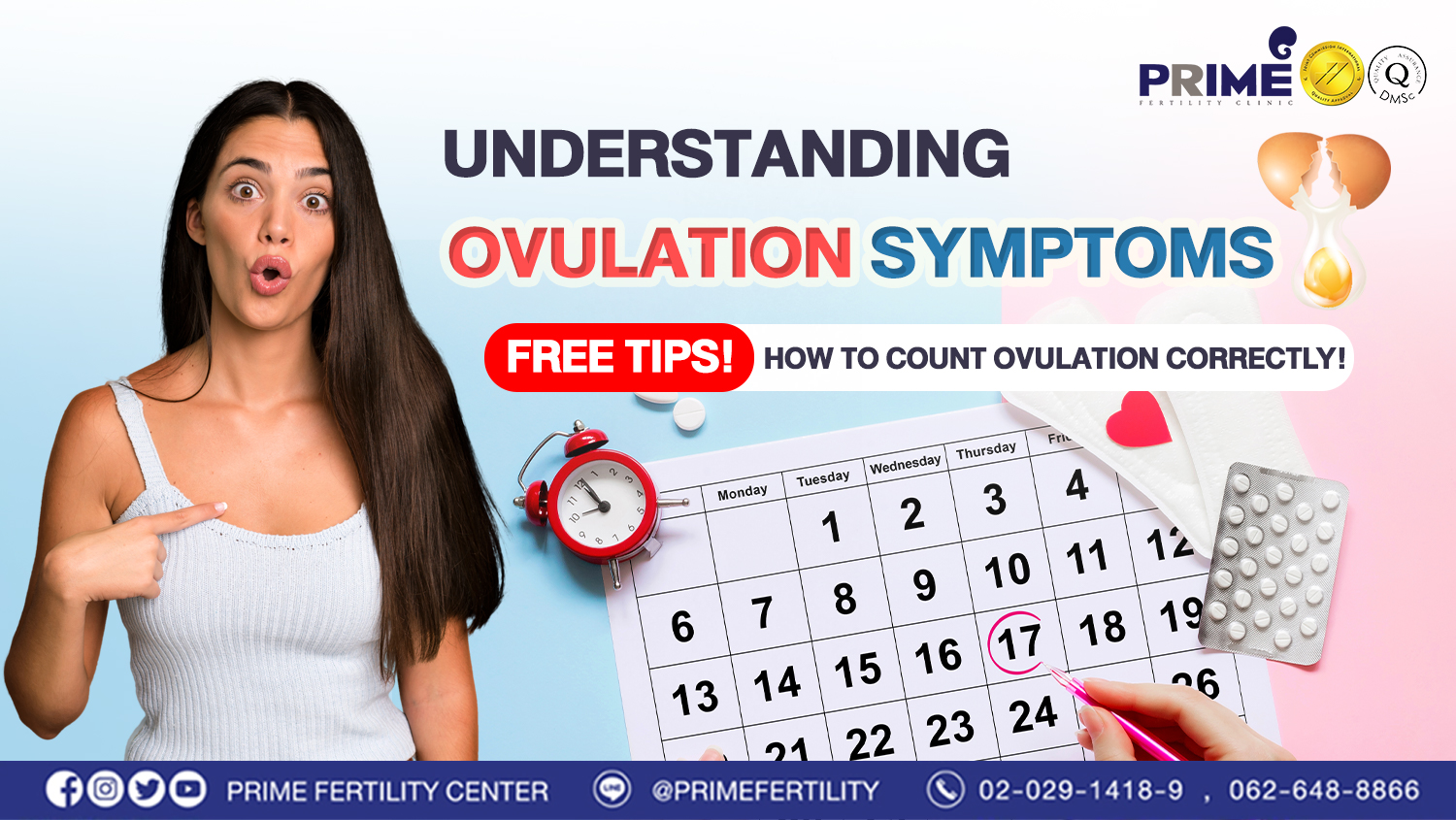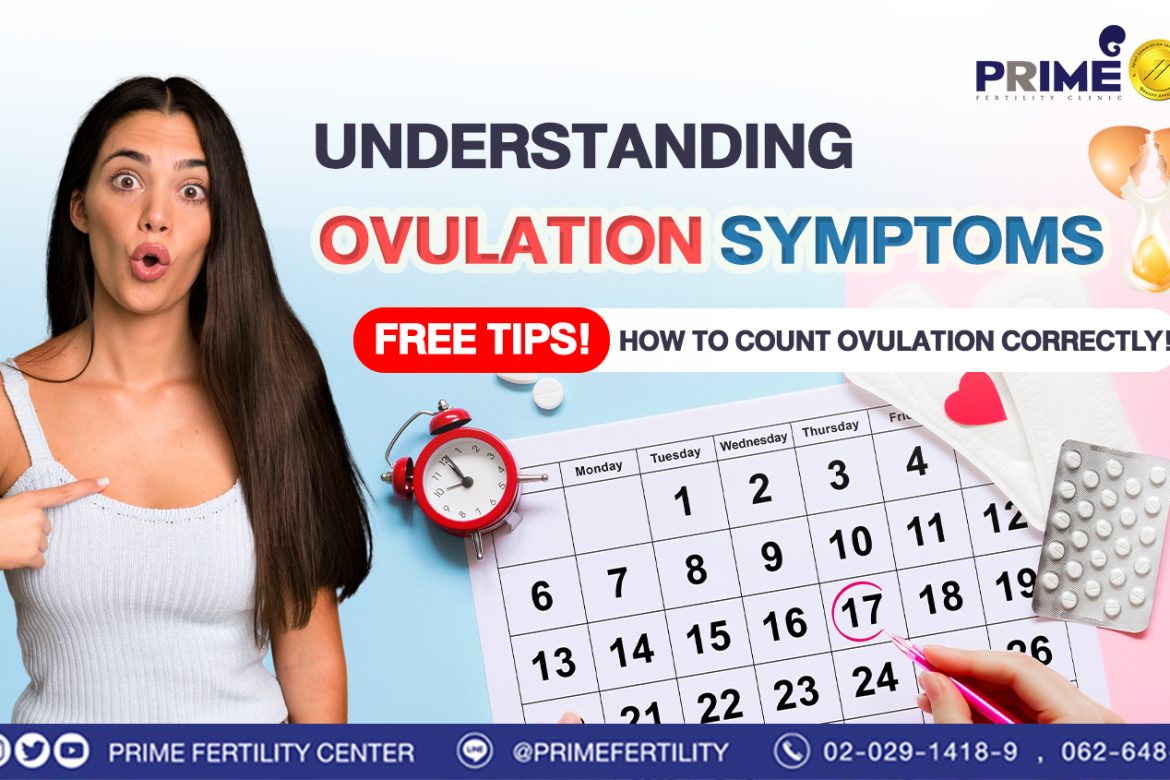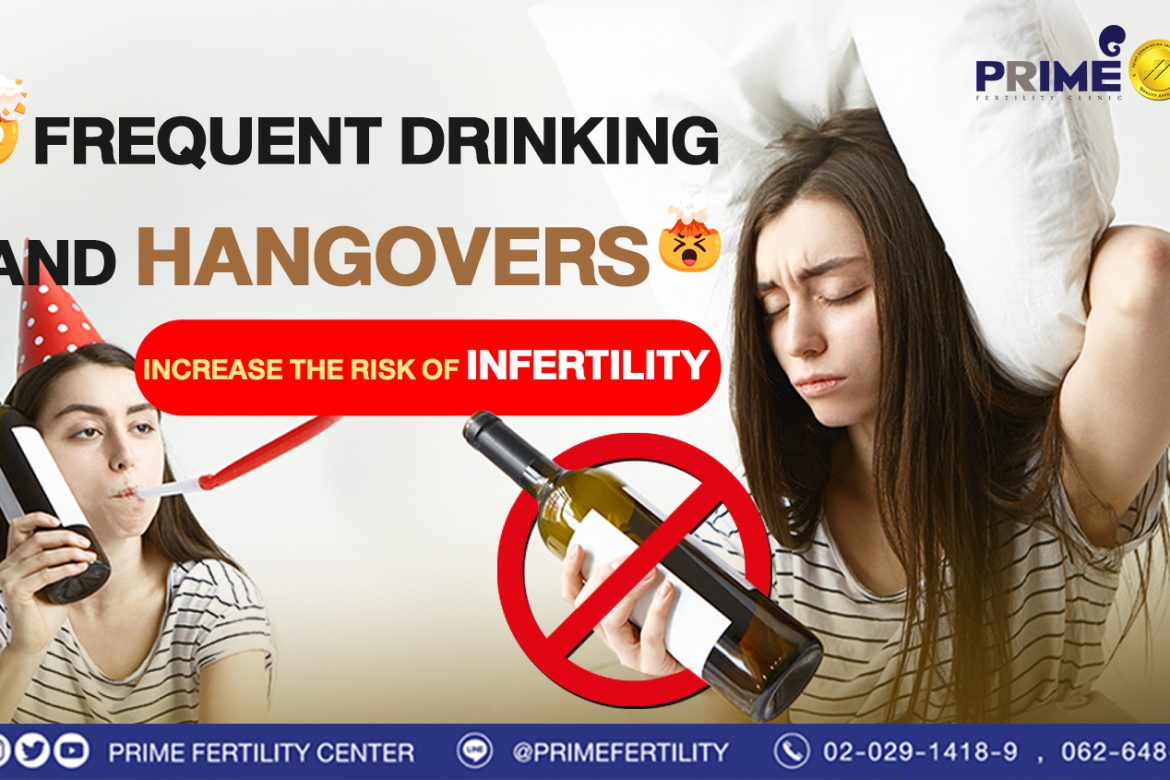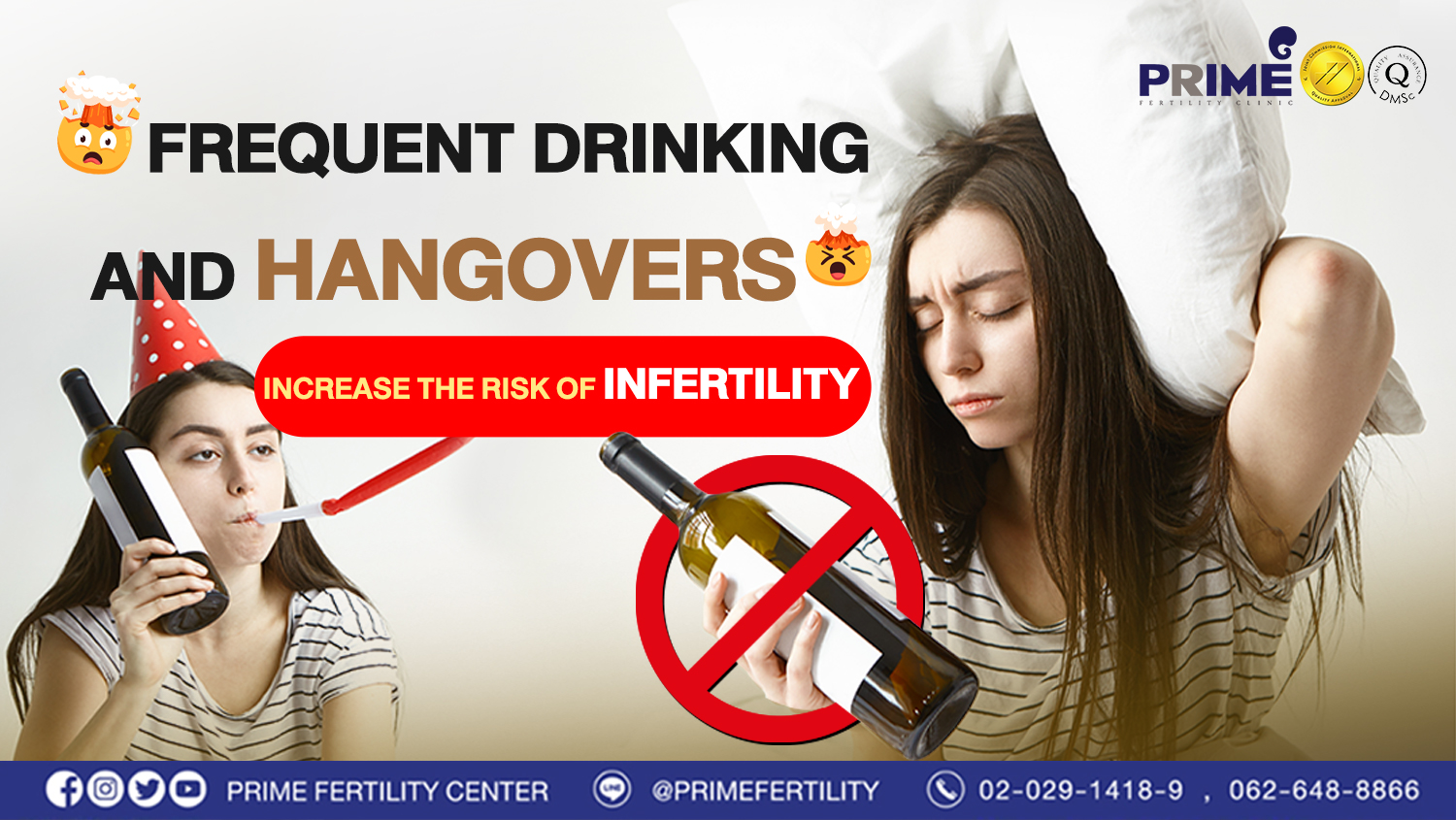Why are pre-marital and pre-pregnancy health checks important?

Why are pre-marital and pre-pregnancy health checks important?
Meta Title: Understanding ovulation symptoms and how to count ovulation correctly!
Meta Description: “Ovulation” is when the body is ready to have a baby. But how do you know when you are ovulating? If you want to count ovulation, how do you count it exactly? Let’s prepare to be a new mother here!
For couples planning to have a baby naturally, one method that cannot be overlooked is “counting ovulation”, a technique that increases the chance of getting pregnant by several percent by doing love activities at the right time.
HDmall.co.th together with Prime Fertility Center will take everyone to explore and get to know “ovulation”, the state when the body is ready to have a baby. What are the symptoms after ovulation? When should you have sex to increase the chance of having a baby? Including sharing how to count ovulation accurately. If you are ready, let’s find the answers together.
What is ovulation?
Ovulation is a condition in which the body releases eggs from the ovarian sac to be fertilized with sperm in the fallopian tubes according to the natural mechanism of the reproductive system. This process occurs only once a month.
Normally, in females, the body begins to produce egg cells. If in the womb, there will be up to 6-7 million eggs. After birth, there will be only 2 million eggs left before the number gradually decreases until there are only 200,000-500 eggs left. Of these remaining, only 400-500 eggs can lead to pregnancy.
Every month, the hormones estrogen, progesterone, LH (Luteinizing Hormone), and FSH (Follicle Stimulating Hormone) work together to produce 15-20 eggs that are complete enough for fertilization.
Before the strongest egg, only 1 egg, comes out of the ovarian sac and moves to the fallopian tube, and fertilization occurs in that area. Whenever an egg is released from the ovarian sac, it can be considered that
“ovulation” has occurred.
How important is ovulation?
In natural pregnancy, sperm from the male will penetrate and fertilize the female egg before developing into an embryo and moving to implant in the uterine wall.
Ovulation is therefore considered one of the most important things in pregnancy because if there is no ovulation, the fertilization process cannot occur and lead to natural pregnancy.
Some women may face infertility due to chronic anovulation (Polycystic Ovarian Disease), which can be observed in the absence of menstruation (Amenorrhea) and irregular menstruation (Oligomenorrhea). Women with this problem can be found in up to 5-10% worldwide.
What is the ovulation cycle?
Ovulation usually occurs in the middle of the menstrual cycle, but the exact date cannot be specified because each woman’s ovulation day is different depending on the date of the menstrual cycle and the length of the menstrual cycle.
Normally, ovulation occurs 2 weeks before the next menstrual cycle. The ovulation cycle can be divided into 4 stages as follows:
Menstruation stage can last 3-7 days in 1 cycle. The first day of menstruation is counted as the first day of the menstrual cycle or the last day of the previous menstrual cycle. Menstruation also indicates that fertilization has not occurred in the previous cycle.
Pre-ovulation stage During this stage, the pituitary gland secretes the FSH hormone to stimulate the ovaries to grow in preparation for ovulation. If the ovaries are in good condition, the ovaries will produce estrogen to thicken the uterine lining and support embryo implantation.
Ovulation Stage During this stage, the pituitary gland produces a large amount of LH hormone to stimulate the strongest egg to come out of the ovarian sac and move to the fallopian tube to await fertilization. This stage occurs on day 14 of the menstrual cycle and lasts only 12-24 hours.
Post-ovulation stage If there are sperm strong enough to penetrate the egg during this stage, fertilization will occur and an embryo will form before the embryo implants in the uterus and continues to grow.
If fertilization does not occur during the post-ovulation stage, the thickened uterine wall to support the implantation of the embryo will gradually break down and be excreted as menstruation on day 28 of the menstrual cycle, which is considered the return to menstruation.
How to accurately calculate ovulation
From the ovulation cycle explained earlier, it can be seen that calculating ovulation is one of the important things that those planning to have children should know. This is because ovulation only occurs once a month and only occurs for a short period of time. If you want to accurately calculate ovulation, you should do the following:
1. Record your menstrual cycle For those preparing to become mothers, the most important thing to do is to record the length of your menstrual cycle every month. You should record from the first day and the last day of your period in that cycle to know how long your period is. A cycle is the first day of your period in the previous month to the first day of your period in the current cycle.
The easiest way to estimate your ovulation date is to count the days according to the calendar. You can do this by counting back 14 days from the first day of your expected period.
However, this method is only suitable for those who have regular periods with a 28-day cycle. Regular periods are usually caused by ovulation occurring at the same time every month. Also, the results of this method may not be accurate enough because a fully developed egg may not always be released 14 days before your period.
There is also a theory that says that the 10th-17th day of the menstrual cycle is when there is a chance of pregnancy. We can use the recorded data to calculate the appropriate day for having sex using the following formula:
The menstrual cycle with the fewest days – 18 = the first day that is ready to conceive (First Fertile Day)
The menstrual cycle with the most days – 11 = the last day that is ready to conceive (Last Fertile Day)
For example, PFC recorded the number of days of menstruation in each menstrual cycle for 12 months: 26, 25, 25, 28, 26, 27, 28, 27, 29, 28, 28, 26. It can be seen that the shortest menstrual cycle is 25 days and the longest is 29 days.
When calculating, the answer is that the first day that PFC is ready to conceive is 25-18 = 3 and the last day that is ready to conceive is 29-11 = 18. Or to put it simply, if PFC wants to have a child, she should have sex with her lover between the 3rd and 18th day of the menstrual cycle in the following month.
This method can be used not only for those who have regular periods but also for those who have irregular periods.
For those who want to start recording, you can choose to write in a notebook by hand or use various health applications to record data. Currently, many applications can record the length of the menstrual cycle and automatically calculate the day of ovulation.
In addition to recording the length of the menstrual cycle every month, recording small changes in the body can be used as information to plan for pregnancy, such as:
- Basal Body Temperature
- Changes in vaginal mucus
- Tracking changes in the body when menstruation begins
- Recording the date of sexual intercourse
Recording the above information will allow us to predict whether we are ovulating or not. If we have sexual intercourse during that time, there will be a higher chance of pregnancy.
2. Use an ovulation test kit Because about 12-48 hours before ovulation, the LH hormone will surge to stimulate the complete egg to move to the fallopian tube. Therefore, in medicine, an ovulation test kit has been invented to check the level of LH hormone in the urine.
If using this test kit and finding that the LH hormone is at a high level, having sexual intercourse within 48 hours will increase the chance of pregnancy.
The most effective way to use the test kit is to test in the afternoon until the evening because the LH hormone is created in the morning and increases continuously during the day. Also, before testing, you should not drink water for at least 2 hours to get concentrated urine and see the test results as clearly as possible.
If the data obtained from recording the menstrual cycle to analyze the date of ovulation is used together with using this test kit, this will save on the cost of using test kits and will also provide up to 90% more accuracy than recording alone.
What are the symptoms of ovulation?
Generally, before ovulation, the hormone levels in the body fluctuate, causing many people to experience breast tenderness, sensitivity to smells, and mood swings. In addition, other symptoms are signs of ovulation, such as:
- Vaginal mucus is slippery During ovulation, the body adjusts itself to be suitable for fertilization by secreting more estrogen, making the vagina at that time slippery and clear, making it easier for sperm to move through and fertilize the egg. If you want to test, you can do so by inserting your finger into the vagina. If you touch it, the mucus can stretch like a raw white egg, indicating that you are in the ovulation period.
- The position of the cervix changes The cervix will be higher, softer, and more open. If you touch the cervix, it will be soft like the lips. However, after ovulation, the cervix will become hard again like the bridge of the nose.
- Lower abdominal pain During ovulation, you will often experience mild lower abdominal pain on one side. This symptom may last for a short time or last for hours. In some cases, there may be vaginal discharge or nausea. In addition, stomach pain during ovulation can also be caused by the expansion of the ovaries.
- Have vaginal discharge which may be brown and is not harmful. The brown color seen in the discharge is because the ovarian sac that used to surround the developing egg has ruptured, causing blood to mix with the discharge.
- Increased body temperature The body’s base temperature at rest is normally between 36.1-36.4 degrees Celsius. However, during ovulation, the body will have higher levels of the progesterone hormone and its body temperature will increase by 0.5 degrees Celsius.
- Increased sexual desire resulting from changes in hormones within the body.
Symptoms that are a result of the ovulation process will last only 1-2 days, and then the symptoms will gradually improve until they return to normal.
Should have sex before or after ovulation?
Although the egg can stay in the fallopian tube for only 12-24 hours, which many people are always worried about, having sex that does not coincide with ovulation can still lead to pregnancy.
This is because once sperm enters the uterus, it can survive in the uterus for another 48-72 hours, meaning that whether you have sex before or after ovulation, you both have a chance of getting pregnant.
However, having sex after ovulation may be less likely because the eggs that are released each cycle have a relatively short lifespan, meaning that by the time fertilization occurs, the eggs may have already deteriorated.
Therefore, the best way to increase the chances of getting pregnant for those who want to have children is to have sex more often. Have sex 3 days before ovulation and within 2-3 days after you think you have ovulated.
What are the symptoms of pregnancy after ovulation?
During the fertilization of the egg and sperm, the mother will not be able to notice any changes. It may take about 7 days for some signs of an embryo to implant in the uterus, such as vaginal bleeding, cramps in the lower abdomen, mood swings, or breast pain.
After about 14-15 days, if the period has not come, it may mean that pregnancy has occurred. However, for accuracy, the mother can take a pregnancy test about 12-14 days after the expected ovulation date, which is the earliest time that pregnancy can be detected.
If you have tried to have a child on your own and have not been successful, let Prime Fertility Center be one of your consultants because we are not only a specialized clinic that provides infertility treatment, we also understand the meaning of the word family.
Prime Fertility Center is a specialized clinic that provides infertility treatment trusted by customers nationwide, and ready to provide services with modern infertility treatment technology.
Reference: HDmall, ovulation calculation (https://hdmall.co.th/blog/health/ovulation-count/), 4th March 2024.
Hellokhunmor, Ovulation symptoms and how to calculate ovulation to increase the chances of getting pregnant (https://hellokhunmor.com/การตั้งครรภ์/ระหว่างตั้งครรภ์/อาการไข่ตก-การนับวันตกไข่-การเพิ่มโอกาสตั้งครรภ์/), 4th March 2024.
Enfa Baby, How does fertilization occur? Solve doubt for mothers (https://www.enfababy.com/การตั้งครรภ์/เคล็ดลับสำหรับแม่มือใหม่/บทความแนะนำ/การปฏิสนธิเกิดขึ้นได้อย่างไรไขข้องข้องใจคุณแม่), 4th March 2024.
Enfa Baby, feel relieved, accurate ovulation counting! increase the chances of pregnancy (https://www.enfababy.com/เครื่องมือ/คำนวณวันไข่ตก), 4th March 2024.
Pobpad, ovulation counting: a simple method that could make your life easier (https://www.pobpad.com/นับวันไข่ตก-วิธีง่าย-ๆ-ท), 4th March 2024.
Pobpad, ovulation, health information that women should know https://www.pobpad.com/ไข่ตก-สาระสุขภาพที่ผู้ห), 4th March 2024.
Prime Fertility Center, feel relieved, accurate ovulation counting! increase the chances of pregnancy (https://www.primefertilitycenter.com/วงจรการตกไข่/), 4th March 2024.
Medthai, 8 ways to count ovulation (ovulation calculation) & what is ovulation? (https://medthai.com/การนับวันไข่ตก/), 4th March 2024.
Should you be interested in getting infertility consultation, please contact us.
Tel. : 062-648-6688 / 062-648-8866 / 02-029-1418–9
Line : @primefertility
Facebook : Prime Fertility Center
E-mail : info@primefertilitycenter.com




